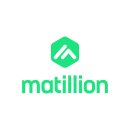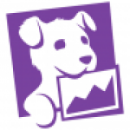So much work goes on behind the scenes in the lead-up to a product launch. While ideally the end user’s experience is as seamless as if they’d been using the new feature all along, those on the inside know all the painstaking decision-making, brainstorming, coding, QA testing and strategizing that went into the release.
With the industry’s persistent pace, though, teams don’t always have the chance to stop and congratulate themselves on a job well done, especially when there are bug fixes, customer support and iterative improvements to address. That’s why Built In Colorado checked in with four cutting-edge local tech companies to see what their product teams have been working on and what challenges and opportunities they’ve encountered.
Adam Tornquist, principal product manager at Hotel Engine, emphasized the importance of listening to customers — which means getting your product in front of them sooner rather than later.
“When it comes to software, if you wait until your product is fully polished to roll it out, you’ve probably waited too long, and you’ll miss opportunities to capitalize on market demand and customer feedback,” he said.
Being attentive to feedback isn’t the same as being reactive, though. Keeping user needs and big-picture goals in mind throughout the release cycle will help the team stay on track, said Erik Lodermeier, product manager at AdCellerant,
“As a product team, you must continue to provide value to your users with every single release while you chip away at the longer-term business strategies,” he said.
Read on for more details about their recent launches, along with insights from leaders at Matillion and Datadog.

Hotel Engine is a hotel booking platform that makes it easy for businesses to manage their travel programs.
Tell us about a recent product your team launched. When did it launch? And what are the benefits for your customers?
In June,, our team launched FlexPro, which is a subscription model offering coverage on all trips booked on the Hotel Engine platform for one low monthly or annual fee. This product goes beyond our existing Flex feature — which enables customers to cancel or shorten bookings last minute — by offering customers more control over how they can cover their trips. Standard travel insurance is often expensive, and it's hard to predict how much you’ll have to spend on it as it varies based on the cost of the trip. FlexPro simplifies the financial aspect by giving customers our coverage at a flat rate — and it’s far cheaper than purchasing coverage on individual bookings.
FlexPro is also much easier to use than traditional travel insurance because you don’t have to prove that your cancellation meets a narrow set of highly-specific requirements or jump through hoops on rigorous documentation to receive your refund. The refund will be instant with no questions asked. It’s an easy-to-use, no-brainer option that shows our customers we’re committed to their experience and to changing some of the outdated practices in the hotel industry.
What was the biggest challenge your team faced while developing this new product, and how did you overcome it?
A project of this scope and magnitude affects everyone in the company; everyone had to be aware of what was happening because everyone had a role to play, whether they were building the product, selling it, answering questions about it or working on various reconciliation efforts. That would have been challenging enough on its own, but we also had an aggressive timeline.
To work through these challenges, we needed leadership support and alignment. We gathered the leadership team and ensured all department heads were on board and were championing the effort of their teams with a clear understanding of what we were building, why and what it meant to their departments and the company. As a result, we were able to collaboratively determine which features we needed to include in our initial launch to meet our target date and which needed to be treated as fast follows. Now that we’ve launched, we’re actively monitoring the behavior of our users and making optimizations.
What have you enjoyed most about working on this product, and why?
First of all, it’s always really exciting to work on something of this scope that's impactful for our users. It’s the first subscription product that Hotel Engine has offered to our travel customers, so it was also fun to leverage this model that we often see in our everyday lives.
People are very familiar with subscriptions in many different industries, so we had the opportunity to take a well-known concept and tailor it to our business and the needs of our customers. That made it easier to move quickly because we knew what we needed in a subscription product. Even though it was a greenfield feature, we didn’t have the chaos of everyone wanting to run in different directions — we knew the path we wanted to follow. We just had to find a way for Hotel Engine to differentiate itself from competitors using a variant of the subscription model. And we did. So far, the feedback from our customers has been amazing, and hearing the impact we’ve made on their businesses in terms of savings and simplicity is so rewarding.
Even though it was a greenfield feature, we didn’t have the chaos of everyone wanting to run in different directions — we knew the path we wanted to follow.”
Matillion provides software that helps businesses extract, load and transform data into cloud data warehouses.
Tell us about a recent product your team launched. When did it launch? And what are the implications for your customers?
Our team successfully launched Matillion's Data Productivity Cloud, a cutting-edge data solution, in June 2023. This product revolutionizes how businesses handle data, providing a unified platform for data integration, transformation and advanced analytics. It empowers our customers to streamline their data operations, make informed decisions faster and gain a competitive edge in the market.
What was the biggest challenge your team faced while developing this new product, and how did you overcome it?
Our biggest challenge was balancing flexibility and simplicity. We wanted to offer powerful data capabilities while ensuring a user-friendly experience. We conducted extensive user research to overcome this, gathering feedback at every stage. We iteratively refined the product, simplifying complex processes without compromising functionality. Regular communication, cross-functional collaboration and agile development methodologies were instrumental in overcoming this challenge.
What have you enjoyed most about working on this product, and why?
The most enjoyable aspect of working on this product has been witnessing its transformative impact on our customers. Seeing businesses leverage the Data Productivity Cloud to unlock valuable insights, improve efficiency and drive growth has been incredibly fulfilling. Additionally, collaborating with a talented team, overcoming technical hurdles and pushing the boundaries of innovation has created a dynamic and stimulating work environment. Being part of a product that empowers businesses and drives their success has been immensely rewarding.
Collaborating with a talented team, overcoming technical hurdles and pushing the boundaries of innovation has created a dynamic and stimulating work environment.”
AdCellerant is a digital advertising company whose proprietary platform, Ui.marketing, provides tools for planning, executing and analyzing programmatic advertising campaigns.
Tell us about a recent product your team launched. When did it launch? And what are the implications for your customers and business?
In May 2023, AdCellerant launched our newest order management system product. The vision of building our own OMS started about a year and a half ago to consolidate the number of platforms our partners manage advertising products out of.
The goal of the Ui.Marketing platform is to improve the advertising our partners execute through AdCellerant by providing a comprehensive system to place orders and track the performance of the underlying line items. This last month we launched it to internal and external users.
Our OMS allows our partners to create, manage and view the order lifecycle from proposal to completion. Ui.Marketing simplifies our internal processes and opens opportunities for our clients. For AdCellerant, introducing the OMS has streamlined our workflow, allowing us to serve our partners better and reinforce our commitment to innovation and customer-centric services.
Introducing the OMS has streamlined our workflow, allowing us to serve our partners better and reinforce our commitment to innovation and customer-centric services.”
What was the biggest challenge your team faced while developing this new product, and how did you overcome it?
Our product team's biggest challenge was shutting down multiple platforms users have grown familiar with over the past seven years and convincing them to adopt one platform with a different look and feel. The OMS release changed how we communicate with clients, store business data and leverage data for future business decisions. It's powerful when you begin to take ownership of business data and critical for future roadmap decisions for the company.
To help overcome this challenge, our engineering and product teams utilized multiple feature toggles to allow beta users to test and validate the new OMS in non-production environments before release. The early pre-release access enabled the product team to make appropriate changes and bug fixes to mitigate the risk of a failed product launch. The pre- and post-release processes are of equal importance. The feedback cycle from our users during those processes allows us to provide iterative improvements to ensure a strong adoption of our new product.
What have you enjoyed most about working on this product, and why?
The most enjoyable part of working on the OMS is seeing the impact of our product on our partners' business operations as well as our own. Our AdCellerant product team gets to be part of direct user impact and provide value with every production release. There is quite a difference in the level of effort between developing a single-user story and developing an entirely new strategy. Still, I enjoy being part of both and all the features and epics in between. We set a north-star goal to increase our monthly average users and the number of orders in Ui.Marketing, and it's exciting to track progress against these goals.

Datadog is a SaaS platform that offers cloud-scale monitoring and analytics.
Tell us about a recent product your team launched. When did it launch? And what are the implications for your customers?
Most recently, one of the teams I work with launched Data Streams Monitoring, a new method to monitor and troubleshoot streaming data pipelines. We launched DSM in late April and now all of our customers that use queuing technologies, like Kafka or RabbitMQ, can measure how long it messages through their entire system — think about trading platforms, payment systems and even F1 cars that send coordinates to the pit crews. These systems must have high resilience and they leverage queues to make sure that even when something goes wrong, they can recover the data. The catch is, though, that knowing how long trades, payments or GPS coordinates spend in the pipeline becomes pretty hard. DSM fixes that by standardizing how we measure latency through systems like these and offers tailored workflows to make sure they’re always up and running — and to fix them quickly when they’re not.
What was the biggest challenge your team faced while developing this new product, and how did you overcome it?
Building a tool that is new to the market presents its own challenges. We didn’t have analyst reports or market maps; we had to work hard to explain to potential users what we were building and why it was necessary. Actual users were responsive to our efforts, but explaining the benefits of our approach to anyone who wasn’t a streaming-pipeline expert took a lot of work. That’s also how we overcame the challenge; with a true collaborative spirit, the entire team joined forces to create a self-explanatory and user-friendly UX. We talked to every user and prospect and integrated their feedback into our system, whether to support more advanced use cases or to improve our visual design. We had to truly listen to our users and take those learnings and build them into our product.
We had to work hard to explain to potential users what we were building and why it was necessary.”
What have you enjoyed most about working on this product, and why?
I’ve been privileged enough to work on DSM from inception to ship and have seen how the product has formed and evolved through leveraging end-user feedback. Through this, I experienced the most joy in watching the team huddle together and dissect problems. They didn’t let system limitations or red herrings get in their way. They dug deep into the tech, worked through challenges and came up with creative solutions. Watching that happen was truly rewarding.












